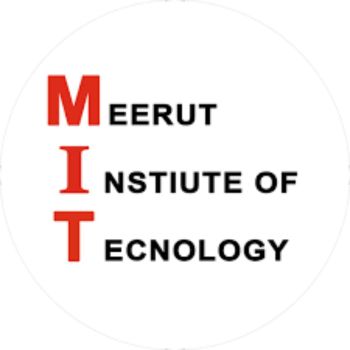Bhagwan Parshuram Institute of Technology (BPIT) in Delhi has established itself as a prominent destination for technical and management education, with a placement ecosystem that reflects both opportunities and growth areas. While its outcomes vary across disciplines, the institute demonstrates consistent engagement with industry partners and a focus on preparing students for evolving market demands.
BPIT’s placement outcomes highlight the dynamic interplay between academic specialization and industry requirements. Below is a detailed breakdown of recent placement statistics:
BPIT Delhi-Placement Overview
| Branch/Course | Avg Package (LPA) | Highest Package (LPA) | % Placed / No. Placed | College Avg Placement (LPA) | Additional Info | Student Review on Placement Data |
| B.Tech CSE | 5-7 | 12-15 | 75-85% | 6.5 | TCS, Infosys, Wipro | Good companies but average packages compared to top colleges |
| B.Tech ECE | 4-6 | 10-12 | 70-80% | 6.5 | Tech Mahindra, HCL | Core companies limited, mostly IT roles |
| B.Tech IT | 5-6.5 | 11-13 | 75-80% | 6.5 | Accenture, Cognizant | Decent placements for top performers |
| B.Tech EEE | 3.5-5 | 8-10 | 65-75% | 6.5 | L&T, Siemens | Fewer recruiters in core electrical fields |
| MBA | 4-5.5 | 8-9 | 60-70% | 5 | Banks, retail sectors | Mostly mid-sized companies visit campus |
| BBA | 3-4.5 | 6-7 | 55-65% | 4 | Startups, SMEs | Placement cell needs more corporate ties |
BPIT Delhi-Course-Wise Analysis
B.Tech Computer Science & Engineering (CSE) CSE remains the most sought-after branch, with 75–85% of students securing placements. Top recruiters like TCS, Infosys, and Wipro offer roles in software development and IT services. While the average package (5–7 LPA) aligns with mid-tier engineering colleges, high performers secure offers up to 15 LPA, often through off-campus opportunities. B.Tech Electronics & Communication Engineering (ECE) Despite strong academic rigor, ECE placements lean heavily toward IT roles, with core electronics opportunities limited to firms like Tech Mahindra. The average package (4–6 LPA) reflects this sectoral shift, though students with niche skills in embedded systems or IoT often secure higher compensation. B.Tech Information Technology (IT) IT placements mirror CSE trends, with Accenture and Cognizant recruiting extensively. The 75–80% placement rate underscores steady demand, though students note that leadership roles or specialized positions remain scarce compared to premier institutes. B.Tech Electrical & Electronics Engineering (EEE) Core electrical engineering faces challenges, with fewer recruiters like L&T and Siemens participating. The 65–75% placement rate and lower salary bands (3.5–5 LPA) highlight the need for broader industry partnerships in power systems and automation sectors. MBA and BBA Programs The MBA program sees moderate traction from banking and retail sectors, with mid-sized companies offering roles in operations and marketing. BBA placements, while improving, rely heavily on startups and SMEs, suggesting opportunities to strengthen corporate outreach.
BPIT Delhi-Institutional Support and Processes
BPIT’s placement cell adopts a structured approach:
- Pre-Placement Training: Workshops on coding, aptitude tests, and interview skills are conducted annually.
- Industry Collaborations: MoUs with IT firms provide internship opportunities, enhancing practical exposure.
- Alumni Networks: Graduates in organizations like ZS Associates and Siemens often facilitate referral drives.
The institute’s ISO 9001:2015 certification and NBA accreditation reinforce its commitment to quality education, which indirectly strengthens employer confidence.
BPIT Delhi-Industry Trends and Comparative Context
In recent years, engineering placements across India have seen a pronounced tilt toward IT/software roles, even for non-CSE branches. This aligns with BPIT’s data, where ~70% of ECE and EEE graduates transition into software careers. The rise of analytics and AI has spurred demand for CSE/IT graduates, though core engineering sectors like power and electronics face slower growth. For management programs, the emphasis on digital marketing and data-driven decision-making has led colleges to revamp curricula, a strategy BPIT could further leverage to attract diversified recruiters.
BPIT Delhi Strengths and Areas for Improvement
Strengths:
- Consistent IT sector recruitment with reputable brands.
- Focus on skill development through labs and research projects.
- Robust internship pipeline bridging academic and industry requirements.
Areas to Enhance:
- Expanding core sector recruitment for ECE/EEE students.
- Building partnerships with fintech and emerging tech firms for MBA/BBA roles.
- Strengthening pre-placement mentorship to help students negotiate higher packages.
BPIT’s placement landscape offers a microcosm of India’s broader technical education scenario—strong in IT, evolving in management, and aspirational in core engineering. While the institute provides a solid foundation for early-career professionals, students are encouraged to supplement campus opportunities with off-campus applications and skill certifications. For aspiring engineers and managers, BPIT represents a viable launchpad, particularly for those willing to proactively engage with its training ecosystem and industry networks.










